The Mississippi Book Festival is less than a week away! This year’s festival is the fifth annual celebration of Mississipi’s book culture, centered around the seat of government in our state, the Mississippi State Capitol. We here at Lemuria invite to visit this one-of-a-kind event and, just maybe, stop by our book-selling tent and say hello (John will be posted at the entrance).
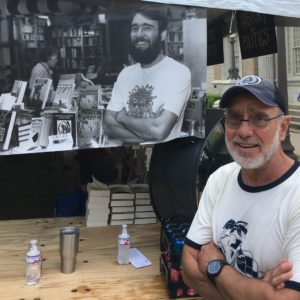
…and ready for business
Please enjoy this panel guide we put together, linking articles from the store’s blog and the Mississippi Book Page, a joint collaboration between the Clarion-Ledger, University Press of Mississippi, and our state’s book stores (especially Lemuria). If a name is linked, it will take you to one of Jana Hoops’s fine interviews that run every Sunday on the Book Page, and a linked title will take you to a review written by a local author, member of the community, or maybe one of our booksellers! Enjoy, and hope to see you this Saturday.
*We’ll do our best to be current with any last-minute adjustments, but times and authors are subject to change.
A SPOTLIGHT ON MISSISSIPPI CIVIL RIGHTS – 9:30 A.M. – C-SPAN/OLD SUPREME COURT
Natalie Adams – Just Trying to Have School: The Struggle for Desegregation in Mississippi
Jelani M. Favors – Shelter in a Time of Storm: How Black Colleges Fostered Generations of Leadership and Activism
Michelle Purdy – Transforming the Elite: Black Students and Desegregation of the Private Schools
Hezekiah Williams – Pushing Forward
POETRY – 9:30 A.M. – STATE CAPITOL 201 H
Ann Fisher-Wirth – The Bones of Winter Birds
January Gill O-Neil – Rewilding
Frank LaRue Owen – The School of Soft Attention
Danielle Sellers – Minor Territories
WOMEN IN FICTION – 9:30 A.M. – STATE CAPITOL 113
Mamta Chaudhry – Haunting Paris
Lisa Patton – Rush
Deb Sepra – Call Your Daughter Home
ENNEAGRAM: WHAT’S YOUR NUMBER? – 9:30 A.M. – GALLOWAY FELLOWSHIP CENTER
Brian McLaren – The Great Spiritual Migration
Suzanne Stabile – The Path Between Us
SOUTHERN HUMOR – 9:30 A.M. – GALLOWAY FOUNDERY
Helen Ellis – Southern Lady Code
Harrison Scott Key – Congratulations, Who Are You Again?
Mary Laura Philpott – I Miss You When I Blink
MISSISSIPPI: THE DELTA – 9:30 A.M. – STATE CAPITOL 201 A
Hank Burdine – Dust in the Road
Melody Golding – Life Between the Levees: America’s Riverboat Pilots
Steven Mannheim – Blues Musicians from the Mississippi Delta
WELTY AND RACE – 9:30 A.M. – STATE CAPITOL 204
Ebony Lumumba – New Essays on Welty, Class, and Race
Rebecca Mark – New Essays on Welty, Class, and Race
Donnie McMahand – New Essays on Welty, Class, and Race
Kevin Murphy – New Essays on Welty, Class, and Race
Cristin Marie Taylor – New Essays on Welty, Class, and Race
KIDNOTE: DAV PILKEY – 9:30 A.M. – GALLOWAY SANCTUARY
Dav Pilkey – Dog Man: For Whom the Ball Rolls
AMERICAN HISTORY: RENEGADES – 10:45 A.M. – C-SPAN/OLD SUPREME COURT
Tom Clavin – Wild Bill: The True Story of America’s First Gunfighter
Eric Jay Dolin – Black Flags, Blue Waters
Peter Houlahan – Norco ’80
SOUTHERN HOSPITALITY – 10:45 A.M. – GALLOWAY FELLOWSHIP CENTER
Elizabeth Heiskell – Southern Living Party Cookbook
Sheree Rose Kelly – Breads and Spreads
Timothy Pakron – Mississippi Vegan
SONIA SOTOMAYOR WITH MARGARET McMULLAN – 10:45 A.M. – GALLOWAY SANCTUARY
Sonia Sotomayor – Turning Pages: My Life Story
Margaret McMullan – Where the Angels Lived: One Family’s Story of Exile, Loss, and Return
CASEY CEP – 10:45 A.M. – STATE CAPITOL 204
Casey Cep – Furious Hours: Murder, Fraud, and the Last Trial of Harper Lee
BEST DEBUT NOVELS OF 2019 – 10:45 A.M. – STATE CAPITOL 113
Juliet Grames – The Seven or Eight Deaths of Stella Fortuna
Julia Phillips – Disappearing Earth
Maurice Carlos Ruffin – We Cast a Shadow
FOR THE LOVE OF THE GAME – 10:45 – GALLOWAY FOUNDERY
Margerita Jurcovic – Margerita’s Gridiron Adventure
Jeff Robertson – Midnight Train
Wright Thompson – The Cost of These Dreams
Jim Weatherly – Midnight Train
Neil White – 125 Years of Ole Miss Football
JOURNALISM IS DEAD. LONG LIVE JOURNALISM – 10:45 A.M. – STATE CAPITOL 201 H
Bracey Harris
Jesse Holland
Laura Santhanam
THE MAGIC OF PICTURE BOOKS – 10:45 A.M. – STATE CAPITOL 201 A
Kathi Appelt – Max Attacks
Heather Fox – Llama Destroys the World
Jonathan Stutzman – Llama Destroys the World
Jonathan D. Voss – Imagine That: A Hoot & Olive Story
MARLANTES AND POWERS – 12:00 P.M. – STATE CAPITOL 113
Karl Marlantes – Deep River
Kevin Powers – A Shout in the Ruins
WELL-READ BLACK GIRL – 12:00 P.M. – GALLOWAY SANCTUARY
Glory Edim – The Well-Read Black Girl
Dhonielle Clayton – The Everlasting Rose
Nic Stone – Odd One Out
Angie Thomas – On the Come Up
CIVIL WAR – 12:00 P.M. – C-SPAN/OLD SUPREME COURT
Jacquelyn Dowd Hall – Sisters & Rebels
Shelby Harriel – Behind the Rifle: Women Soldiers in Civil War Mississippi
John F. Marszalek – Hold On with a Bulldog Grip: A Short Study of Ulysses S. Grant
Ben Wynne – The Man Who Punched Jefferson Davis
IN BRIEF – 12:00 P.M. – STATE CAPITOL 201 H
Polly Rosenwaike – Look How Happy I Am Making You
Kimberly King Parsons – Black Light
George Singleton – Staff Picks
BILL DUNLAP HOUR – 12:00 P.M. – STATE CAPITOL 204
Bill Dunlap – Pappy Kitchens and the Saga of Red Eye the Rooster
Martha Foose Hall
Diane C. McPhail – The Abolitionist’s Daughter
Robert St. John
ONE-ON-ONE WITH MICHAEL DOBBS – 12:00 P.M. – STATE CAPITOL 201 A
Michael Dobbs – The Unwanted
ALL ABOUT MISSISSIPPI – 12:00 P.M. – GALLOWAY FOUNDERY
Josh Foreman – Hidden History of the Mississippi Sound
Luke Lampton – Images in Mississippi Medicine
Kate Stewart – Parchman Farm: Mississippi’s State Penitentiary in the 1930s
Janice Branch Tracy – Mississippi Moonshine Politics: How Bootleggers and the Law Kept a Dry State Soaked
WELTY PHOTOGRAPHS: 21st CENTURY EDITION – 12:00 P.M. GALLOWAY FELLOWSHIP CENTER
W. Ralph Eubanks
Forrest Galey
Todd Lape
Mary Alice White
PHOTOGRAPHY, AN IMAGE OF HISTORY – 1:30 P.M. – GALLOWAY FOUNDERY
James T. Campbell – Mississippi Witness: The Photographs of Florence Mars
Maude Schuyler Clay – The Beautiful Mysterious: The Extraordinary Gaze of William Eggleston
Timothy Duffy – Blue Muse
Andrew Moore – Blue Alabama
MEMOIR – 1:30 P.M. – GALLOWAY FELLOWSHIP CENTER
Beth Ann Fennelley – Heating & Cooling
Kiese Laymon – Heavy
Margaret McMullan – Where the Angels Lived: One Family’s Story of Exile, Loss, and Return
THE THRILL OF MYSTERY – 1:30 P.M. – STATE CAPITOL 113
Chanelle Benz – The Gone Dead
Saul A. Lelchuk – Save Me from Dangerous Men
S.J. Rozan – Paper Son
Philip Shirley – The Graceland Conspiracy
SOUTHERN ART – 1:30 P.M. – STATE CAPITOL 204
Bill Dunlap – Pappy Kitchens and the Saga of Red Eye the Rooster
J. Richard Gruber – Dusti Bongé: Art and Life: Biloxi, New Orleans, New York
ANN PATCHETT: A LIFE EXPLORED – 1:30 P.M. – GALLOWAY SANCTUARY
Ann Patchett – The Dutch House
ECHOES OF THE PAST – 1:30 P.M. – STATE CAPITOL 201 H
Melanie Benjamin – The Mistress of the Ritz
Minrose Gwin – The Accidentals
Ariel Lawhon – I Was Anastasia
Elizabeth H. Winthrop – The Mercy Seat
YA FANTASY – 1:30 P.M. – STATE CAPITOL 201 A
Kathi Appelt – Angel Thieves
Jimmy Cajoleas – The Good Demon
Roshani Choksh – The Gilded Wolves
Margaret Owen – The Merciful Crow
CIVIL RIGHTS: AN AMERICAN ISSUE – 1:30 P.M. – C-SPAN/OLD SUPREME COURT
Rebecca Tuuri – Strategic Sisterhood: The National Council of Negro Women in the Black Freedom Struggle
Shennette Garrett-Scott – Banking on Freedom: Black Women in US Finance Before the New Deal
Ted Owenby – Hurtin’ Words
William Sturkey – Hattiesburg: An American City in Black & White
Dave Tell – Remembering Emmett Till
ALL ABOUT SOHO PRESS – 2:45 P.M. – STATE CAPITOL 201 H
Bronwen Hruska – Publisher, Soho Press
Juliet Grames – Associate Publisher, Soho Press
Paul Oliver – Director of Marketing and Publicity, Soho Press
PG-13 – 2:45 P.M. – STATE CAPITOL 201 A
Mason Deaver – I Wish You All the Best
Shalanda Stanley – Nick & June Were Here
Nic Stone – Odd One Out
Jeff Zentner – Rayne & Delilah’s Midnite Matinee
RICHARD FORD WITH JOYCE CAROL OATES – 2:45 P.M. – GALLOWAY SANCTUARY
Richard Ford – Between Them
Joyce Carol Oates – My Life as a Rat
SOUTHERN FICTION – 2:45 P.M. – GALLOWAY FELLOWSHIP CENTER
Lisa Howorth – Summerlings
Michael Knight – At Briarwood School for Girls
Mary Miller – Biloxi
Snowden Wright – American Pop
PHOTOGRAPHY AND CULTURE – 2:45 P.M. – GALLOWAY FOUNDERY
Michael Ford – North Mississippi Homeplace
Ken Murphy – Local Color
Marc Perrusquia – A Spy in Canaan: How the FBI Used a Famous Photographer to Infiltrate the Civil Rights Movement
LGBTQ+ – 2:45 P.M. – STATE CAPITOL 113
Robert W. Fieseler – Tinderbox
Mesha Maren – Sugar Run
Nick White – Sweet & Low
TRUE CRIME ACROSS AMERICA – 2:45 P.M. – C-SPAN/OLD SUPREME COURT
Karen Abbott – Ghosts of Eden Park
Casey Cep – Furious Hours: Murder, Fraud, and the Last Trial of Harper Lee
A. Brad Schwartz – Scarface and the Untouchable
SOUTHERN LITERARY REVIEW – 2:45 P.M. – STATE CAPITOL 204
Johnnie Bernhard – Writers on Writing
Bren McClain – Writers on Writing
MISSISSIPPI BLUES – 4:00 P.M. – GALLOWAY FOUNDERY
Robert R. Marovich – The Gospel According to Malaco
Roger Stolle – Mississippi Juke Joint Confidential
Tammy L. Turner – Dick Waterman: A Life in Blues
WORLD WAR II – 4:00 P.M. – C-SPAN/OLD SUPREME COURT
Michael Dobbs – The Unwanted: America, Auschwitz, and the Village Caught In Between
Alex Kershaw – The First Wave
Sam Kleiner – Flying Tigers
CRIME AND THE LAW – 4:00 P.M. – STATE CAPITOL 201 H
Lovejoy Boteler – Crooked Snake: The Life and Crimes of Albert Lepard
John Hailman – Foreign Missions of an American Prosecutor: From Moscow to Morocco and Paris to the Persian Gulf
Patrick O’Daniel – Crusaders, Gangsters, and Whiskey: Prohibition in Memphis
James L. Robertson – Heroes, Rascals, and the Law: Constitutional Encounters in Mississippi History
POETS LAUREATES NATASHA TRETHEWEY AND BETH ANN FENNELLEY – 4:00 P.M. – GALLOWAY FELLOWSHIP CENTER
Beth Ann Fennelley – Heating & Cooling
Natasha Trethewey – Monument
McMULLAN YOUNG WRITERS WORKSHOP – 4:00 P.M. – STATE CAPITOL ROOM 204
Jamie Dickson
Kiese Laymon
Margaret McMullan
Areial Thomas
CANDACE BUSHNELL WITH JUDY HOTTENSEN – 4:00 P.M. – STATE CAPITOL 113
Candace Bushnell – Is There Still Sex in the City?
Judy Hottensen – Associate Publisher, Grove Atlantic
STUCK IN THE MIDDLE – 4:00 P.M. – STATE CAPITOL 201 A
Jimmy Cajoleas – The Rambling
Roshani Chokshi – Aru Shah and the Song of Death
Shannon Greeland – Scouts
Kimberly Willis Holt – The Lost Boy’s Gift
Jodi Kendall – Dog Days in the City
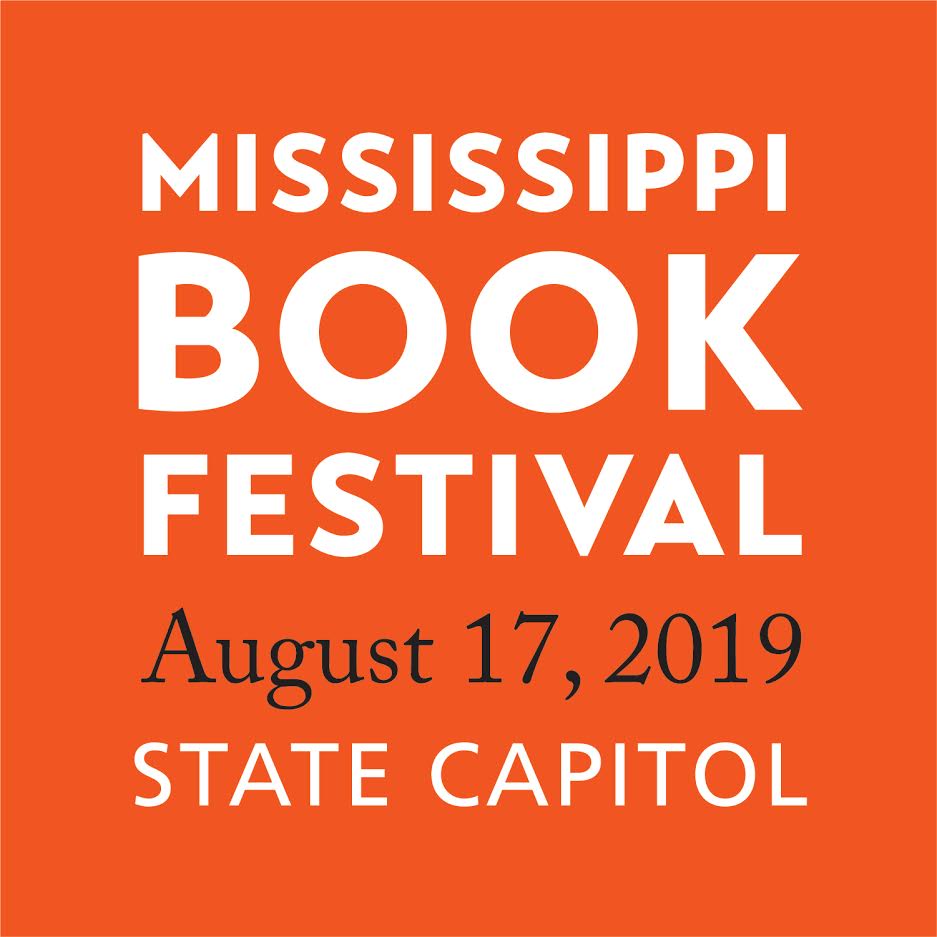
 First, a little in-universe context. Dog Man is a book-within-a-book series, “written” by George and Harold, the mischievous heroes of Pilkey’s zany Captain Underpants series. Dog Man was the duo’s first foray into comic making, and we’re better people for it. The titular character has, like all super heroes, an interesting origin story: the city’s best cop and best police dog are injured in an explosion. The dog’s body is badly injured, but his head is intact; his human partner’s injuries are the exact opposite. A nurse suggests a reasonable way to save both—sew the dog’s head on the man’s body. Thus, Dog Man, crime fighter extraordinaire.
First, a little in-universe context. Dog Man is a book-within-a-book series, “written” by George and Harold, the mischievous heroes of Pilkey’s zany Captain Underpants series. Dog Man was the duo’s first foray into comic making, and we’re better people for it. The titular character has, like all super heroes, an interesting origin story: the city’s best cop and best police dog are injured in an explosion. The dog’s body is badly injured, but his head is intact; his human partner’s injuries are the exact opposite. A nurse suggests a reasonable way to save both—sew the dog’s head on the man’s body. Thus, Dog Man, crime fighter extraordinaire.




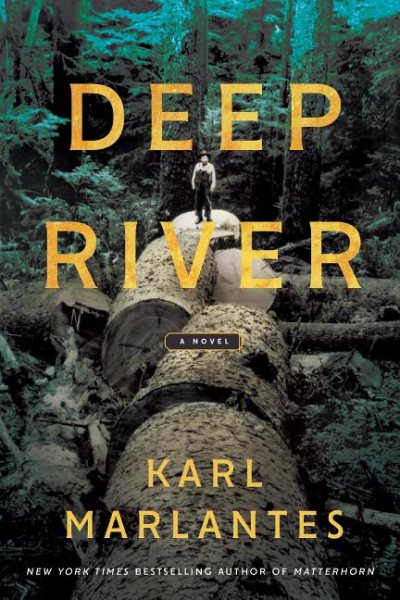 Karl Marlantes says his penchant for writing long novels comes naturally: he has much to tell through his stories and the undercurrents he masterfully weaves just below the surface.
Karl Marlantes says his penchant for writing long novels comes naturally: he has much to tell through his stories and the undercurrents he masterfully weaves just below the surface.
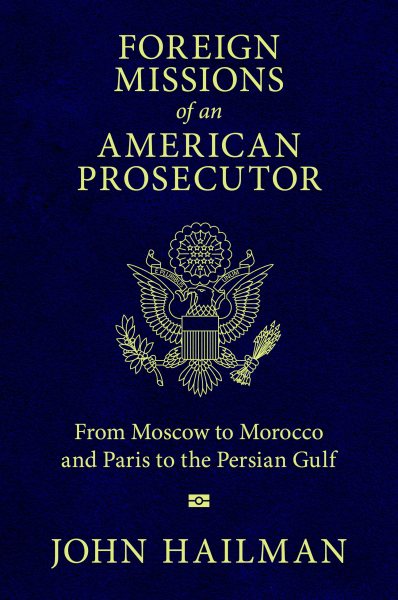 Hailman’s fifth book gives us a world filled with adventures, romances, and intrigue he experienced during a lifetime of international travels, beginning as a university student living in France. Traveling the world later as a representative for the U.S. Justice Department, Hailman encountered criminals and conspiracies, including a plot in Ossetia, Georgia, to hijack his helicopter and kidnap him. He brings these adventures to life in this engaging and exciting book.
Hailman’s fifth book gives us a world filled with adventures, romances, and intrigue he experienced during a lifetime of international travels, beginning as a university student living in France. Traveling the world later as a representative for the U.S. Justice Department, Hailman encountered criminals and conspiracies, including a plot in Ossetia, Georgia, to hijack his helicopter and kidnap him. He brings these adventures to life in this engaging and exciting book. Mostly, I’m a football fan, with only a minor concern for keeping a toe in other waters of the sporting well, mostly for conversation purposes. And occasionally, the content would run a little too deep into the numbers and statistics for me to connect. But often, astonishingly so, it was a repository of top-flight long-form journalism, stories that connect you straight to the truths of the human heart (Faulkner’s “
Mostly, I’m a football fan, with only a minor concern for keeping a toe in other waters of the sporting well, mostly for conversation purposes. And occasionally, the content would run a little too deep into the numbers and statistics for me to connect. But often, astonishingly so, it was a repository of top-flight long-form journalism, stories that connect you straight to the truths of the human heart (Faulkner’s “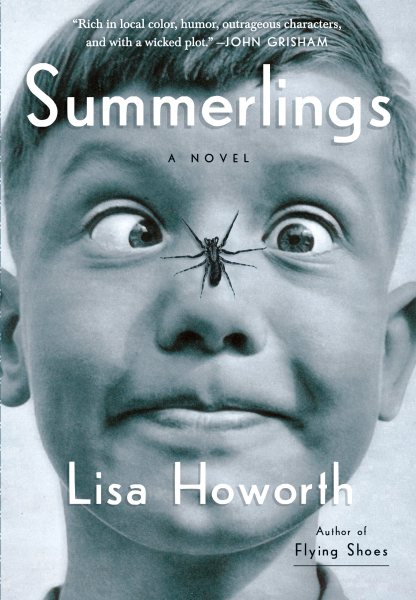 Oxford’s Lisa Howorth combines a humorous twist with the looming realities of an America on the cusp of the 1960s in her sophomore novel,
Oxford’s Lisa Howorth combines a humorous twist with the looming realities of an America on the cusp of the 1960s in her sophomore novel, 
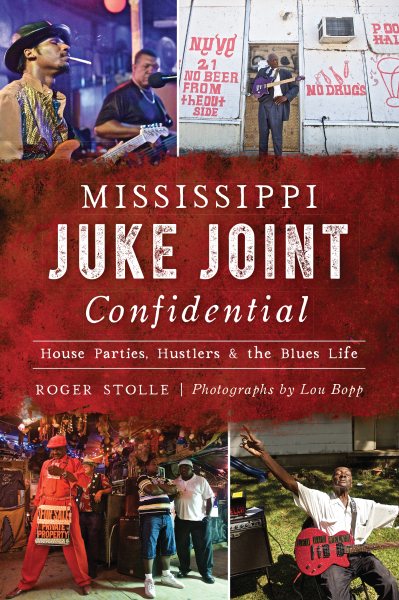 Early in the millennium, Stolle moved from St. Louis to Clarksdale to open Cat Head music shop. Since then, he has gone on to start the annual Juke Joint Festival, produce several artists’ records and tours, become a contributing editor for Delta Magazine, deejay locally and on satellite radio, helm a trio of blues documentaries (We Juke Up In Here, M is for Mississippi, and Hard Times) and host the web series Moonshine and Mojo Hands.
Early in the millennium, Stolle moved from St. Louis to Clarksdale to open Cat Head music shop. Since then, he has gone on to start the annual Juke Joint Festival, produce several artists’ records and tours, become a contributing editor for Delta Magazine, deejay locally and on satellite radio, helm a trio of blues documentaries (We Juke Up In Here, M is for Mississippi, and Hard Times) and host the web series Moonshine and Mojo Hands.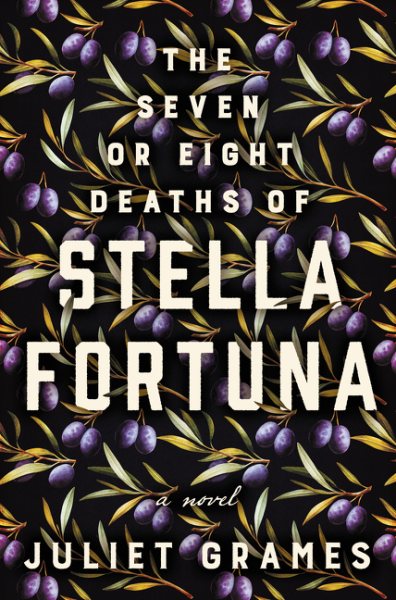 When I began reading about Stella Fortuna, I had no idea I would be swept up on an encompassing journey with such an incredible woman. This debut novel from Juliet Grames, whose full title is
When I began reading about Stella Fortuna, I had no idea I would be swept up on an encompassing journey with such an incredible woman. This debut novel from Juliet Grames, whose full title is 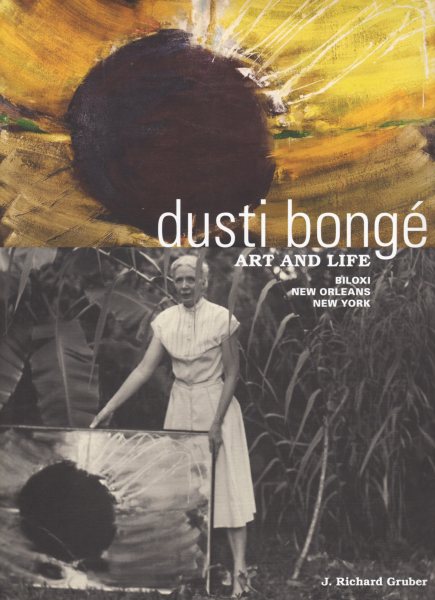 In the interest of full disclosure, let me state that I know Rick Gruber, and I know him to be a scholar of the first order who has at his command more information about art of a southern nature than anyone alive. It is also worth noting that his prose is infinitely readable, unlike so many of those who write about art in a scholarly fashion.
In the interest of full disclosure, let me state that I know Rick Gruber, and I know him to be a scholar of the first order who has at his command more information about art of a southern nature than anyone alive. It is also worth noting that his prose is infinitely readable, unlike so many of those who write about art in a scholarly fashion.